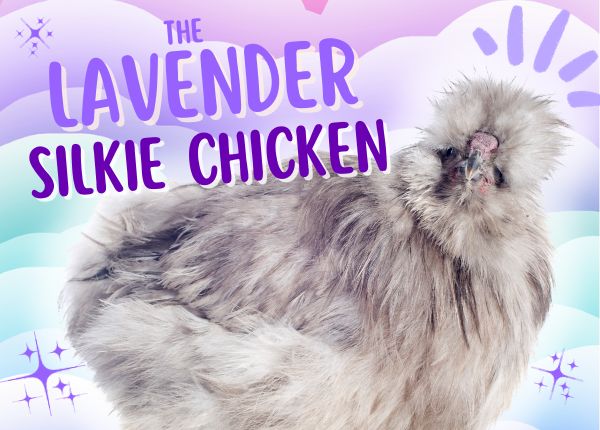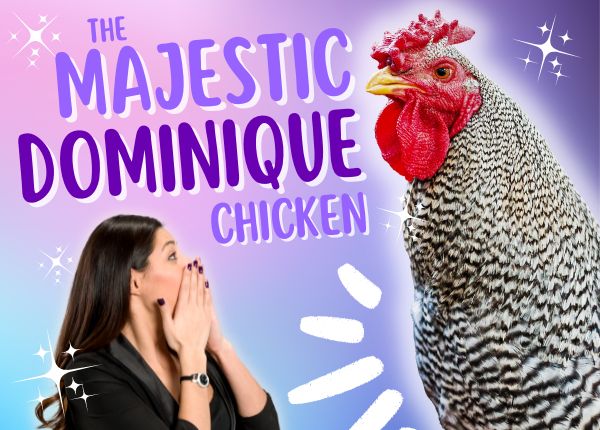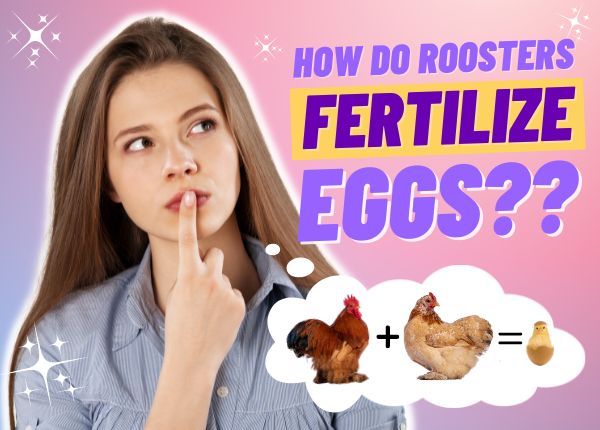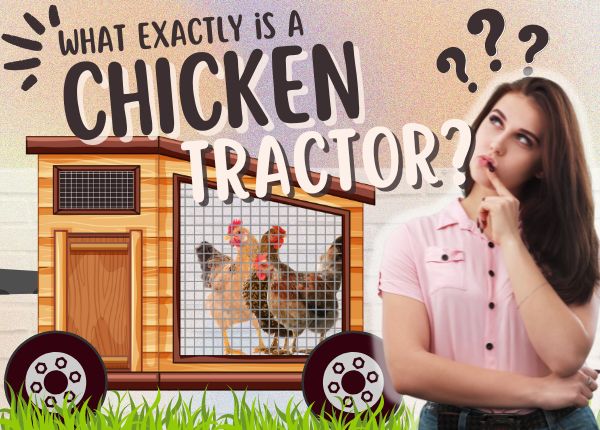
Curious about quails? You’re not alone. These shy little birds are becoming a BIG deal!
Do you fancy trying your hand at keeping hens, but don’t have the space or the skills? Are poultry banned in your county, or do you have noise-averse neighbors?
Then it’s time to UNVEIL THE QUAIL!
Quails are becoming more and more popular as a quiet and compact eggy equivalent to chickens. They’re cute, they’re quirky, and they lay up to 300 vitamin-rich eggs a year.
Quails have long been known for their sought-after meat and their use in sport, rather than for their eggs, but I think quail eggs are the little hidden gems of the egg world!
There are lots of us craving that homestead happiness of harvesting eggs at sunrise, but we don’t quite have the space to live that dream. Quail have the space conundrum nailed!
Quails are very small, exotic, dual-purpose game birds and they’re easy to keep. They’re not much bigger than a chubby robin and they lay teeny, tiny eggs - but lots of them - making quail a clever choice if you have limited space to offer.
If you’re contemplating keeping these little lovelies for their mini eggs, as pets, or for a bit of both, then this blog eggs-plores the ups, the downs, the ins, and the outs of quails.
Before you quail over at the thought of picking the perfect bird, don’t panic! Chickenpedia offers the fool-proof way to make an eggucated decision on which birds and breeds would suit your homestead best. Read on for quails, then cluck back here to learn more about which types of chicken might tick your egg boxes.
Here’s what to EggSpect:
- What Are Quails?
- Why Keep Quails?
- What Do Quail Look Like?
- How Big Are Quails?
- Quail Vs Chickens
- Quail Vs Bantam Chickens
- How Well Can Quails Fly
- Are Quail Noisy?
- Male Vs Female Quail
- The California Quail
- The Button Quail
- The Coturnix Quail
- Quail Eggs Vs Chicken Eggs
- How Many Eggs Do Quail Lay?
- How To Eat Quail Eggs
- How Many Quails Should You Keep Together?
- Keeping Quail with Chickens
- Do Quail Need a Coop?
- What Do Quail Live In?
- How Much Space Do Quail Need?
- Can Quail Be Free Range?
- What do Quails Eat?
- Quail Healthcare
- 4 Common Illnesses in Quails
- Pros & Cons of Quails
WHY KEEP QUAILS?

What are Quails?
Quails are game birds. They’re the smallest relative of the pheasant family, and the more you learn about them, the more you’ll see how similar these diddy dudes are to their more cumbersome big cousins.
Quails are ground-dwelling fowl that hide in the undergrowth and feed on seeds, insects, and green vegetation. There are six native quail species in North America, and wild Japanese quail can still be found in Russia, East Asia, and some other parts of Africa.
Quails are fascinating little feather balls. They’re entertaining to watch - mainly because they’re just a bit dumb which makes them quite endearing.
They’ll learn to recognize and greet you, but they’re never going to enjoy being handled. They’re too flighty and fragile to be fussed, and will only end up injured, frightened, or flying off in a frenzy if you try to force affection on them.
Why Keep Quails?
Quails have been kept for meat and hunting for a long time, but homesteaders are wising up to another use for these little lovelies…
Quails are the most compact, yet least complex, egg-laying birds you can keep. That’s why so many backyard keepers love them.
Quails need considerably less space, less equipment, less food, and less interaction than other laying birds. They aren’t interested in large, fancy coops with nesting boxes or high perches.
Quails aren’t as intelligent or friendly as some chicken breeds, so they’ll cope quite happily without too much human interaction.
Some counties don’t allow poultry keeping but have no rules about keeping game, meaning quails offer a great little loophole for you to farm your own eggs.
Quails have a short life expectancy of 2-3 years, so they’re a shorter-term commitment than chickens and a clever way to test your husbandry skills if you don’t want to jump straight into chicken keeping.

Quail eggs are even smaller than bantam eggs, but they do lay a lot of them, up to 300 a year! Quails start laying early compared to other birds and will be earning their keep at just 6-8 weeks.
MEET THE QUAIL
What Do Quail Look Like?
Quail are rounded, compact little creatures with pointy wings and small heads. Most quail have a crazy little plume on their heads which makes them look a little bit like aliens bopping around the bushes.
Most qual varieties have a pheasant-like patterning on their bodies, and are variations of grey, brown, white, and sometimes slate blue.
How Big Are Quails?
Quails are small, squat little birds, best described as the size of chunky sparrows or robins.
Mature quails measure 6 - 18cm in length with a wingspan of 32 - 35cm. Females are visibly bigger and heavier than males, weighing 112 – 156g whereas males weigh just 70 – 140g.
Quail Vs Chickens
Comparing chickens and quails is a bit like comparing cats and dogs. We all do it - even though they are completely different creatures – because we want to know which would suit us best.
Quails are a lot smaller than chickens, even bantams. Quails need less feed, less space, less kit, and are generally easier and cheaper to keep. It’s for these reasons that quail are a popular chicken equivalent for beginners.
Quails are not poultry, so they can be kept in certain counties and homes where chickens can’t. Along with needing less room, they’re not as noisy as most chicken breeds, and can’t be kept free range, meaning that they’re better suited to semi-urban homes.
Quails lay as many eggs as the best chicken breeds out there. They’re super tasty and healthy eggs, but they’re tiny little things too. You’d need to eat four quail eggs in place of one standard chicken egg (or two bantam chicken eggs).
Quails aren’t as clever or as sociable as chickens. They are simple little souls and often described to be…well, a bit thick! They’re not going to show you any affection, but they might learn to greet you, so long as you consistently reward them with treats.
Quail Vs Bantam Chickens
If you’re thinking about keeping Quails, then you’ve probably been down the bantam versus quail rabbit hole already. Both are cute little birds with eggy benefits.
It’s a common blooper to think of quails as being similar to bantam chickens. They’re not. Quails and bantams tick different boxes, but on the plus side, one is bound to be better suited to your needs than the other.
Quails are dwarfed by bantam chickens, need less space, less stuff, come into lay faster, and are more productive with less feed. Quails are more economically practical and are a clear solution if you can’t keep poultry or have an allergy to chicken eggs.
On the flip side, chickens are much friendlier, their eggs are larger, there are more varieties to choose from, they live for longer, and you can allow your chickens to free range.
Can Quails Fly?
Quails can fly very well. Some species are migratory and fly at speeds of up to 40mph, but they give the illusion that they are terrible fliers.
Quails are tiny and their main line of defense is avoidance. They like to stay hidden at ground level, amongst bushes, scrub, and long grasses.
Just like pheasants, you won’t know they’re there until you startle them and they – in turn – scare the life out of you. They’ll projectile launch in a frenzied, flapping mess up into the sky. Their flight pattern is all over the show. They dart up in a panic and then ping around the air like a bouncy ball.
They’re not incompetent, they’re strategically chaotic. Ariel bouncy-ball birds are very hard for predators to catch!
Most will only fly for short distances of approximately 100 yards before dropping back into ground cover.
Are Quails Noisy?
Quail hens aren’t noisy. It’s one of their big plus points with keepers. They sing with their characteristic call of three quickly repeated chirps, but it’s a very pretty, sweet song.
Quails coo and trill when they spot their human approaching, and male quails do crow, which they’ll do all day long, but it’s not loud or likely to offend anyone.
You’re more likely to hear than see quail in the wild.
Male Vs Female Quails
Male quails are smaller than females, but have thicker, more deeply colored plumes or top knots. Males also tend to be more brightly colored, or more defined in their patterning, than females.
Different Types of Quail
Quail are split between two families: New-World Quails and Old-World Quails. The families are different, but ultimately, they’re all still quails.
The simplest way to explain the family divide is by size. Old-world quails are heritage, larger quails. New-world quails are smaller, newer varieties.
There are at least 130 different species of quail species worldwide, and these are further split into color varieties. Most quails are a mixture of brown, grey, black, and white and they have a scale pattern on their bellies.
TOP 4 POPULAR QUAIL BREEDS

The California Quail
The California quail is California’s state bird and is also known as the valley quail. It’s native to California but can be found wild in Vancouver Island and British Columbia.
The California quail has a black and white marked head, a funky chocolate-colored comma-shaped top knot, and a blue/grey breast. They’re quite stocky quails and grow to around 10 inches in length.
They’re beautiful birds and are mainly kept as entertaining pets.
The Button Quail
Button quails, or Chinese painted quails, are the smallest of the small. They are super cute measuring about 4-5 inches from beak to tail.
They’re so diddy that their eggs are hard to achieve much with, so they’re more popular as quirky pets than producers.
They only have three toes at the front of their feet, and no rear-facing toe, so they can’t wrap their toes around a perch and are strictly ground-dwelling.
The Coturnix Quail
The Coturnix quail, or Japanese quail (Coturnix japonica) is a larger Old-World quail and is most popular for its use as a fancy dish.
In quail terms, they offer rapid growth and a heavy table weight growing to 6 inches in length and 4 inches in height. They’re one of the calmest quail species, so are also a good bet if you’re wanting to be able to handle your pet quail.
Varieties include gold, range, fawn, white, and the rather dapper tuxedo Coturnix quail.
The Northern Bobwhite Quail
The Northern Bobwhite (Colinus virginianus) quail is a tiny, new-world quail at just 8 to 9 inches long. Varieties include brown, black, and white mixes.
Their delicate size makes them adorable to look at, but they’re fragile and handling is risky, and definitely not for kiddies!
QUAIL EGGS
Quail Eggs Vs Chicken Eggs
Quail eggs are micro-sized, mottled, and very tasty. Quail eggs weigh just 12 grams, compared to an average of 60g for a hen’s egg.

Quail eggs are super tasty with a higher yolk-to-white ratio than chicken eggs, however, on the flip side, they are higher in cholesterol too. They’re generally very healthy and have more vitamins and minerals per mouthful than chicken eggs.
Quail eggs have double the iron content of chicken eggs, so they’re a great dietary choice for anyone with a low red cell count, or anaemia. They’re also considered to be antioxidants and assist your body in the elimination of harmful toxins.
Taste-wise, quail eggs are not as heavy tasting as duck eggs, and they’re a bit thicker, or creamier, than chicken eggs.
How Many Eggs Do Quail Lay?
Quail hens lay 230 – 300 eggs a year. That’s not far off a daily deed!
In the wild, quail will lay two or three clutches of about a dozen eggs each, per year. If your quail are well cared for, they may well lay 230 – 250 eggs a year with sufficient lighting.
The best quail for egg laying are Japanese (or Coturnix) quail. Some show-off strains of Japanese quail will lay over 300 eggs a year, but they’ll need a little help to meet this milestone. They’ll need high-protein quail feed and additional lighting over the darker, winter months.
Quail hens mature and start to lay at just eight weeks old, compared to chickens who won’t get started until around 24 weeks. Quail hens will lay at full throttle for around a year and then lay less in subsequent years.
How To Eat Quail Eggs
Quail eggs are most popular eaten hard-boiled, in salads, pickled, or as delicious, down-in-one devilled eggs.
Quail eggs are so tiny that your options in the kitchen are a little more limited than with chicken eggs. You’d need to crack a lot of quail eggs to make an omelet, and you’ve no chance of dipping a slice of toast into one of these little yolk bombs.
Quail eggs are notoriously a nightmare to crack open. They have tough shells that you will need a knife to open. A tap on the side of a bowl isn’t getting you into this tough little nugget!
Luckily when they’re boiled, they’re easier to peel. You only need to boil them for two minutes before running them under cold water and enjoying them.
KEEPING QUAILS
How Many Quails Should You Keep Together?
Quails shouldn’t be kept alone and are happiest paired with other quails of the same variety.
Your covey - that’s the quail equivalent of a flock - should have 3-5 hens to every rooster. Any less and your hen will get molested by the bored male. Any more than that and your hens will turn the tables and bully your roo!
It’s a tricky balance, but it’s one you only need to tackle if you specifically want to breed your quails. There’s no need to keep males if you just want to enjoy their company and their eggs.
For most of the year, quails live alone or in pairs. However, in the winter they team up into cozy coveys of between 8 and 25 birds.
Unlike some birds, quails don’t just pair for a single breeding season. In the wild, when adult quails become a mating pair, it’s for life.
Quail pairs remain monogamous until the bitter end and have a modern parenting approach of sharing all the parenting duties. They both pitch in selecting the right nesting sites, incubating their eggs and raising their chicks. Teamwork makes the dream work!
Keeping Quail with Chickens
Quails must be kept separately from poultry, but can be kept in aviaries with cockatiels, conures, or budgerigars.
It’s easy to see why you’d expect them to live alongside other outdoor birds, but quails don’t share the same needs as chickens or ducks.
Chickens🐔 will bully quails, even the littlest bantams will try it on, meaning your quails will either suffer in a confined enclosure or fly off to escape the nasty big kids in an open enclosure. These guys just aren’t going to be friends. Sorry.
Even if your chickens happened to behave themselves around the momma quails, they’d trample or eat their teeny eggs.
Chickens and quails can’t dine together either since quails need a higher protein diet of between 24% and 28%. This is too high for chickens, and standard layer feed for chickens is too low for quail.
Poultry carry diseases that are lethal to quail, like Coryza. Chickens can carry Coryza and not be at all symptomatic. So, unless you had all your chickens tested, they could be carrying a ticking time bomb for your more vulnerable quail.
Do Quails Need a Coop?
A chicken coop is not the right real estate for Quails. They’re ground dwelling and don’t like raised perches, raised coops, ramps, or nest boxes. To add to the confusion, they’re also flighty, so need a ceiling that won’t harm them if they fly into it.
What Do Quails Live In?
Quails need a secure cage, aviary, or run with a roof to keep them safe and confined. Unless you can offer a tall aviary then they’ll need a soft material, like fruit netting, stretched below the ceiling of their enclosure to soften any crashes.
Quails don’t like nesting boxes. They prefer to lay in a corner or hide their eggs under something. This means they often sit on or trample their own eggs. Doh. So, a slanted-base quail House is a great way to allow eggs to roll away before they’re damaged.
Quail cages need to be made of a finer mesh than chicken coops since rats are top of their predator list. Rats will squeeze through standard chicken wire to reach quails and their eggs.
Ventilation is important in quail housing as the little stinkers produce higher levels of ammonia than poultry. They’ll get smelly fast if they aren’t well ventilated and kept clean.
How Much Space Do Quails Need?
Adult quails need 1 square foot of ground space and 12-18 inches of height. You might see some people advise a little less than this, but the smaller you go, the more you’ll have to clean your cage out.
Can Quails Be Free Range?
Quails aren’t for free-range life. Sure, they manage in the wild, but they cope by avoiding predators. If you actuallywant to keep them then don’t even think about going free range. They’ll be off at the first sight of a squirrel, and they’ll never return.
What do Quails Eat?
Adult Quails eat around 15g of specialist quail feed or turkey feed per day, plus leafy greens 🥬.
Quail chicks should be fed non-medicated turkey starter crumbs until they’re 5-6 weeks old and then move on to a turkey grower or fisher feed. By the time your quail are 10 weeks of age, they’ll need feed that contains 18-20% protein.
Some specialist quail feeds contain seeds as well as pellets, but quail are messy and picky eaters if they’re given too much choice. They’re a bit like fussy toddlers in that they like their food to be all the same size, or else they’ll fling it on the floor. Charming.
QUAIL HEALTHCARE
Healthy quails are active and alert and will eat, drink, (and poop) all day long. They should have supple skin on their shanks, a clean booty, bright eyes, and dry nares. Feathers should look clean and well-groomed, and the beak should be nice and smooth in appearance.
10 Signs of illness in Quails
- Standing mainly on one foot or laying on their side on the habitat floor
- Fluffed up, over-plucked, or dirty feathers
- Wheezing, sneezing, or coughing with labored breathing
- Runny, bloody, or discolored stools
- Wing droop
- Nasal discharge
- Red, swollen, or weepy eyes
- Lack of appetite
- Thin-shelled eggs (or even eggs without shells)
- Straining to pass their eggs or poops
Common Illnesses in Quails
1. Lice
Like all birds, lice and mites can become a big problem for quail. Look out for feather picking and excessive preening which is often due to a protein deficiency or lice.
2. Bumblefoot
Ground dwelling in captivity is a recipe for foot problems, but even more so in non-perching quails. Keeping your cage floor clean is imperative for avoiding foot problems like Bumblefoot in quails.
3. Respiratory Problems
Quail droppings have a much higher ammonia concentration than other poultry types, so keeping these little critters clean is critical to prevent respiratory infections.
Watch out for signs of difficulty breathing, listlessness, snotty nostrils, or sneezing. Some quail can fight off the infections by themselves with the help of immune boosters, like garlic or apple cider vinegar, but you might need antibiotics if the infection takes hold.
4. Quail Disease
Quail disease causes lesions in the intestines of the affected bird, as well as anemia, and it can be fatal.
“Ulcerative enteritis is caused by infection with Clostridium colinum. It primarily affects bobwhite quail…Clinical signs include sudden death and hemorrhagic enteritis. Diagnosis is by histopathology, bacterial culture, and PCR. Streptomycin and furazolidone are effective treatments, and bacitracin in feed can be used as a preventive.” (MSD Vet Manual)
Ulcerative Enteritis is often called Quail disease as it is most prevalent in quails, though it can affect chickens and other fowl too.
“In susceptible bobwhite quail, sudden death from ulcerative enteritis occurs without signs or weight loss and with up to 100% mortality in just 2–3 days…Chickens recover within 2–3 weeks, and mortality rarely exceeds 10%.” (MSD Vet Manual)
PROS & CONS OF QUAILS
Should I Keep Quails?
Whether or not you’re on the right trail with the quail will depend on what you want from your birds. If you’re after a compact little layer that will deliver a daily egg and not bother your neighbors, then you’re onto a winner with this little lovely.
If you want a hen who delivers decent-sized eggs 🥚 or has pet potential, then you’re going to need to rethink.

Quail Plus Points:
- Don’t require a lot of space
- Can be kept in poultry-free counties
- Relatively easy to keep
- Beginner friendly
- Less feed required
- Reliable supply of tiny but tasty eggs
- Pretty to look at
- Hens are quiet
- Fast to mature & come into lay
- Shorter life span for less commitment
Quail Cons:
- Not cuddly or easy to handle
- Regular cleaning is needed - Can be smelly
- Eggs are tiny and uses are limited
- Less variety than chickens
- Higher protein feed can be more expensive
- Can’t mix easily with other birds
- Males can be loud and noisy
- Flighty – cannot be free-range
- Susceptible to predation
- They’re not that smart!
Here’s What Real Quail Keepers Have to Say
There’s nothing quite like popping out to your yard to shop for home-laid breakfast ingredients. Serving up a plate of poached eggs with bright yellow yolks is the perfect, sustainable, healthy way to start the day.
Before you jump on the quail-breeder trail, make sure you’ve found the right feathery friend to bring your homestead vision to life. Just because these little critters have impressed you – which I know they will have – I can’t help but insist you get to grips with bantam chickenstoo! Yep, they need a tad more room than quails, but they offer a lot in return.
Chickenpedia have a great beginner-friendly suite of courses that egg-splain the ins and outs of all thing poultry (or game!), help you find the perfect birds for your world, and then tools you up with all the knowledge you’ll ever need to keep happy and healthy hens. Their site is jampacked with fast, sensible, solid advice, direct from the experts.










Leave a comment (all fields required)